Are you wondering how foundation drainage keeps your home dry? You’re in the right place! Follow along as we describe different types of drainage methods that will work for you. You can choose one of these solutions or even a combination to counter water intrusion.
How Does Foundation Drainage Work?
As water gathers around your foundation, it builds up and causes pressure, which pushes against your walls and can cause damage. Foundation drainage collects the gathering water and carries it to a sump pit. Once it reaches the sump pit, water fills up and activates the sump pump, sending the water out of your home through discharge lines.
Foundation drainage has two main goals. One is keeping water from seeping into your basement or crawl space, and two is preventing foundation problems caused by hydrostatic pressure.
What Causes Drainage Problems?
Below are a few common reasons you have drainage issues.
Grading – Grading is like sculpting your property so that everything flows in the right direction. Water can pool up in flat areas of your yard after heavy rains. Grading works like a slide, allowing water to flow away from your home. If a neighbor’s yard has poor grading, their water can become your problem.
Soil – Water interacts differently based on the type of soil surrounding your foundation. For example, clay-rich soil has a difficult time draining water evenly.
Gutters – Gutters help water exit your roof without pouring over the sides. Clogged gutters lose their effectiveness.
Downspouts – Downspouts carry the water from your gutters to your yard. You don’t want a downspout dropping water at the base of your foundation.
Driveway – Your driveway needs to slope away from your foundation. As a general rule, your driveway should not rise more than 15 feet over a distance of 100 feet.
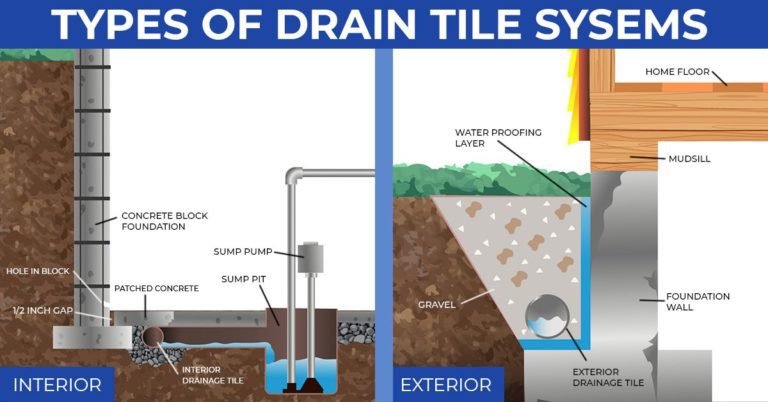
Interior Drain Tile System
An interior drain tile system is a perforated* pipe that sits in a bed of washed stone. The pipe is laid underneath your slab floor, following the inside perimeter of your foundation. The water is finally carried to a sump pit, where the sump pump ejects the water outside of your home.
*Perforated means the pipe is pierced with small holes that allow gathering water to enter.
Exterior Drain Tile Systems
An exterior drain tile system keeps water from building up in the soil outside your foundation walls. The system channels the water away, draining the soil around your home and relieving pressure from your foundation. The drain tile carries the water to your sump pit, and the sump pump ejects the water using a discharge line.
Both the interior and exterior systems accomplish the same goal, keeping your home dry. Read more about drain tile systems.
French Drains
How do French drains work? French drains work the same way as exterior drain tile, except instead of being placed around your foundation, they’re laid in your yard at ground level. This helps counter water pooling in flat areas of your property.
A French drain is made up of a trench, crushed stone, water-permeable landscaping fabric, and perforated piping. The piping should end at the lowest part of your yard, a drainage ditch, the street gutters, or a dry well.*
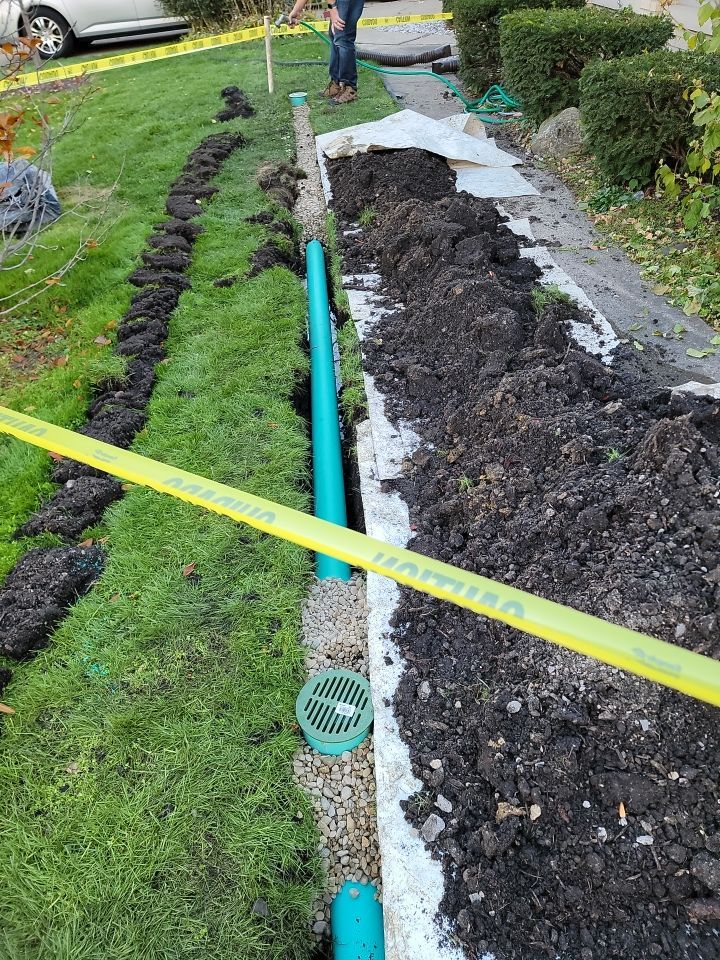
*A dry well is an underground structure that disposes of unwanted water, most commonly surface runoff and stormwater, and in some cases greywater.
Gutter/Downspout Extensions
Gutter extensions are highly recommended for the average home in America. Instead of water from your gutters pouring directly at the base of your home’s foundation, these extensions channel the water further away (at least 20ft) from your home. Your gutter system is only as good as your downspout drainage.
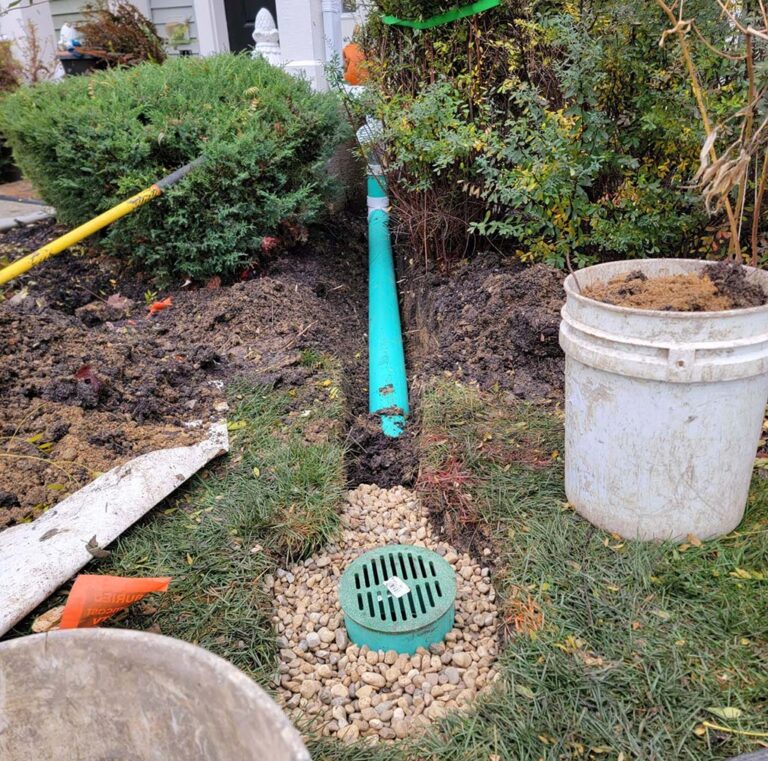
How Foundation Drainage Works With Sump Pumps
Both drain tile systems connect to a sump pit where a sump pump ejects the water out of your home. Home’s built in areas with a high water table usually come equipped with sump pumps. In 1987, the U.S. Federal Clean Water Act made sump pumps a mandatory part of many new builds, so if you have a newer house, you probably own a sump pump, even if you live in a drier area.
How Do Sump Pumps Work?
Once the water starts to fill up your sump pit, your sump pump turns on. Sump pumps are activated by one of two methods:
- A pressure sensor – A pressure sensor sends a signal to your pump when the water pressure in your sump pit reaches a certain level.
- A float activator arm – A buoyant ball floats on the water’s surface inside the sump pit. When the water reaches a certain height, the ball activates the sump pump.
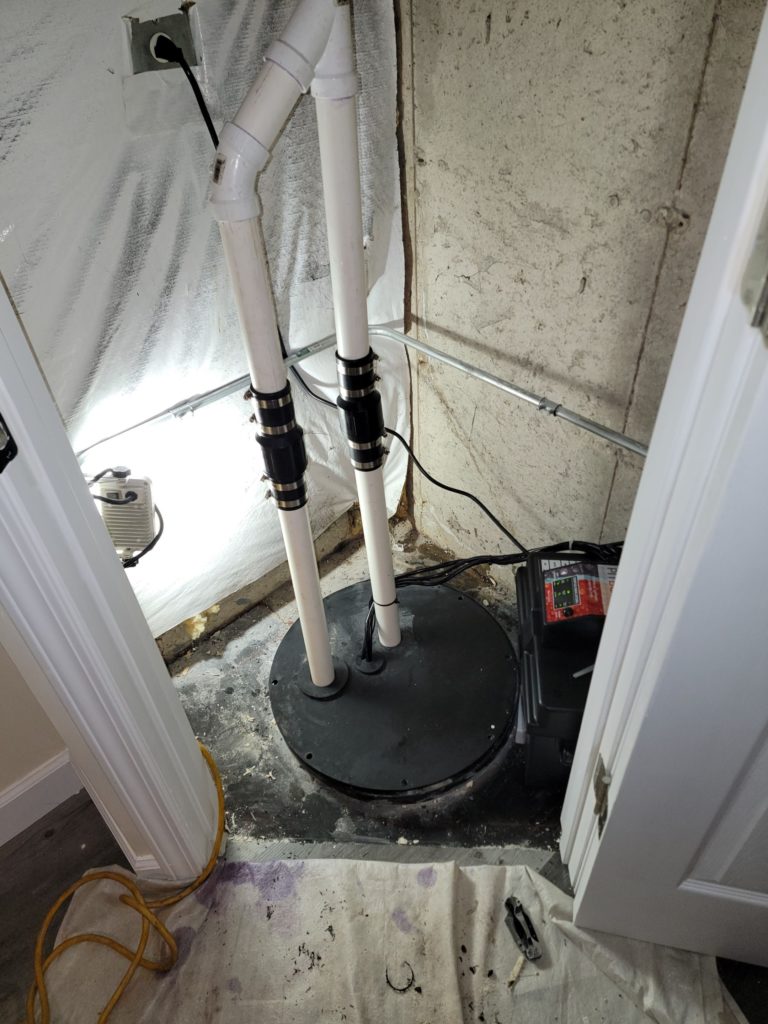
There are two types of sump pumps: submersible and pedestal. Submersible pumps are hidden inside the sump pit, while pedestal pumps are mounted on columns above the floor.
Sump pumps use a centrifugal pump with an impeller to move water within the pit. As the impeller pushes the water out of the pit, more water flows in to fill the void, forcing the water out through discharge lines.
Sump pumps also come in handy if a pipe breaks and floods your basement.
The Real Seal
If you live in the Greater Chicago area and need foundation drainage, who do you call? There are so many options out there. Who can you trust to provide quality service? You need the real deal, and you need The Real Seal. Call us today, and we’ll get you started with an in-depth inspection, free repair estimate, and a list of our finest solutions. We also provide basement waterproofing, foundation repair, crawl space repair, and more.
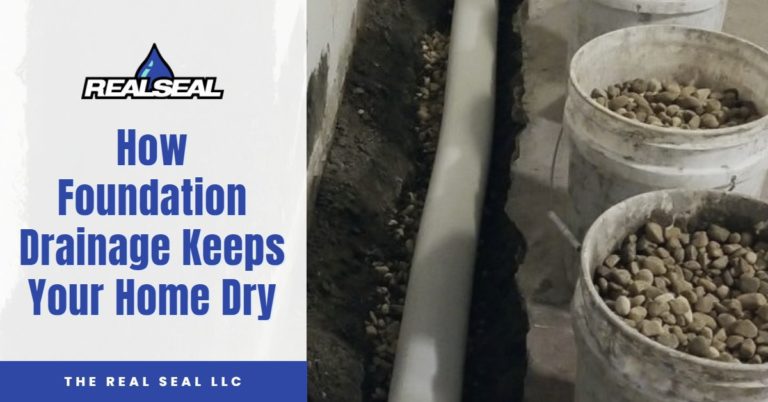
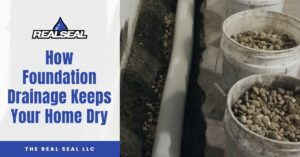





2 Responses
Thanks for the info about foundation drainage. My friend is building a home. I’ll share this info about foundation drains with my friend.
Happy to help, Max! Good luck to your friend on building his home!